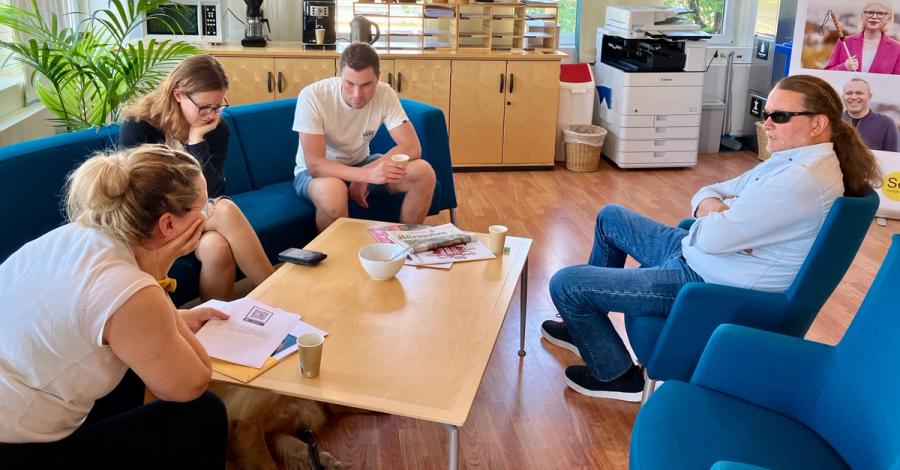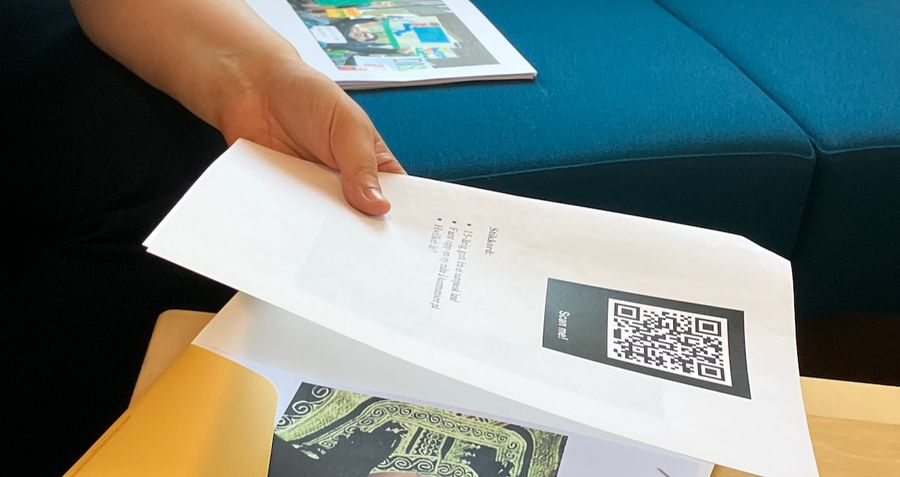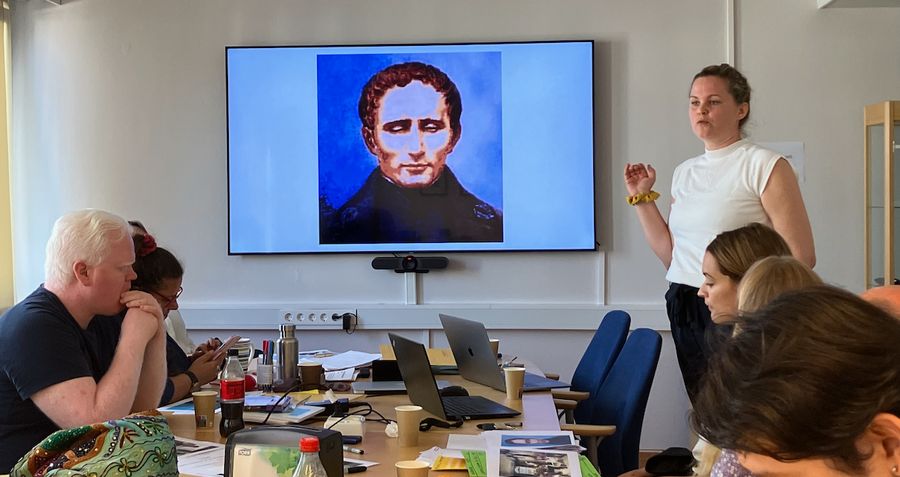Participatory methods for all
In brief, universal design is “the design and composition of an environment in a way that takes the variation in functional ability of the entire population into consideration, including the needs of people with disability" (Norwegian Directorate for Children, Youth and Family Affairs).
Democracy in practice
For the facilitator, universal design means, for example, that the classroom is universally designed. We also recommend that you use the tips and advice in the framework “Universal Design for Learning” (see below) when planning and carrying out activities.
Some of the participants may need adaptation (differentiation) to compensate for various barriers. Examples include personally adapted physical aids, such as a wheelchair or hearing aid. Consider carefully how exercises and group work should be carried out to open for people in wheelchairs, people with reduced hand function, a visual or hearing disability or other disability.
By opening for diversity and treating everyone as equal you are promoting democracy in practice!
The best teachers plan their teaching on the participants’ premises, and they constitute a diversity (Svendby, Randveig 2023).
Preparations
Information material: For participants with reduced eyesight or blindness it is best that they receive texts and presentations in advance. Use text and formats that are compatible with screen reading software. The font size should be at least 26 in PowerPoint presentations.
Use easy-to-read versions of human rights documents and conventions. Here you will find a collection of important texts (easy to read documents) in English.These documents are useful for people of all ages and target groups.
Group work: Consider whether all groups should have the same size. The participants may have varying needs and at times smaller groups will work best. Also consider whether the groups should have a coordinator who is responsible for collecting reflections and presenting these in plenary sessions. This may apply, for example, to exercises with timelines that have many pictures.
Universal design of learning
A useful educational tool when planning activities in the Toolkit is “Universal Design for Learning” (UDL) which has been developed by the Center for Applied Special Technology. The tool is based on research into how we learn. Because we receive knowledge and information in various ways, the teaching methods should also reflect this and be varied and flexible.
Read more about Universal Design for Learning
Universal Design for Learning is based on three principles:
- It is important to have varied forms of engagement: Use methods and activities that open for active participation and exploration.
Tips: The Toolkit has a variety of participation activities, such as group tasks, exercises and energizers. This is an active form of learning where the individual’s experience and competence are relevant and made use of. It may be beneficial to invite organisations or others with experience from the grassroots level to illuminate the topic from “the real world”. To increase participants’ engagement you can also relate the topic to the local environment. - It is important to have varying forms of representation: We perceive and understand information in different ways. This can, for example, be related to reduced vision or hearing. Information should therefore be provided in different formats such as text, audio, video or graphics.
Tips: The Toolkit has activities where the task is to place pictures correctly on a timeline. We have included short texts with the pictures, and QR codes linking to audio or video. Link to the activity with timeline. - It is important to have a variety of actions and expressions: There are different ways of expressing knowledge and reflections. Not all of these are suitable for all people. For people with reduced hand function or reduced sight, the use of pens or marker pens in group work will be a barrier. You should therefore be open for various types of presentations and equipment/materials. The activity "What is universal design" is an example with various types of presentations and equipment.
Tips: When presenting group work the participants can choose to deliver in a digital format or only orally. Reflection notes submitted in advance may also be a good alternative.
Meetings/conferences
Sheryl Burgstahler PhD (The Center for Universal Design in Education) has developed a checklist for universally designed conferences.
This will be useful for implementing workshops and other events where Toolkit material is used.
Evaluation
Feedback and input from the participants at the end of the teaching session are important for assessing how it has functioned. What should be adjusted the next time around? To ensure honest feedback we recommend distributing a simple anonymous questionnaire. This can also be sent digitally.
Definition
The UN Convention on the Rights of Persons with Disabilities (CRPD) defines universal design as “the design of products, environments, programmes and services to be usable by all people, to the greatest extent possible, without the need for adaptation or specialized design. ‘Universal design’ shall not exclude assistive devices for particular groups of persons with disabilities where this is needed”.



